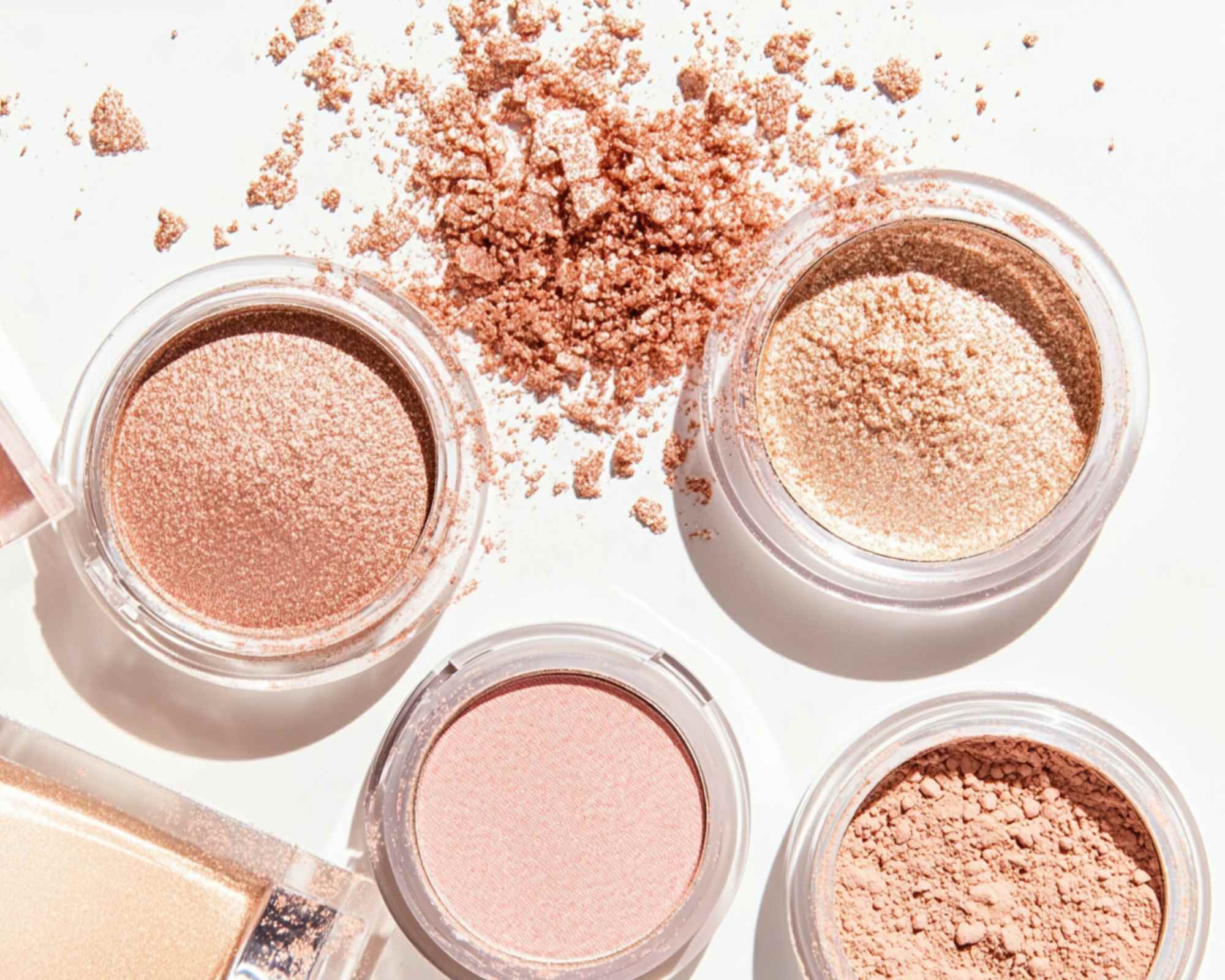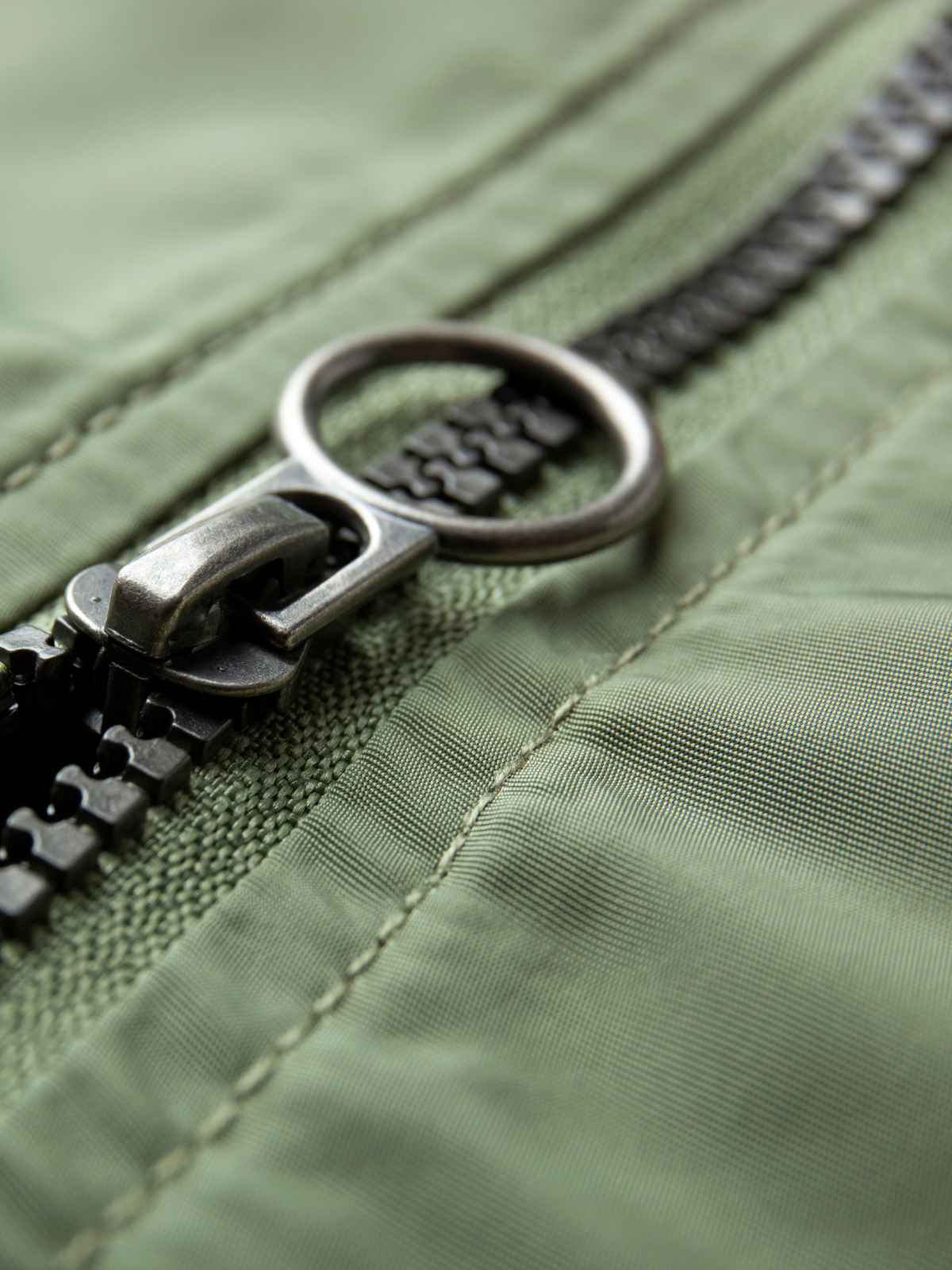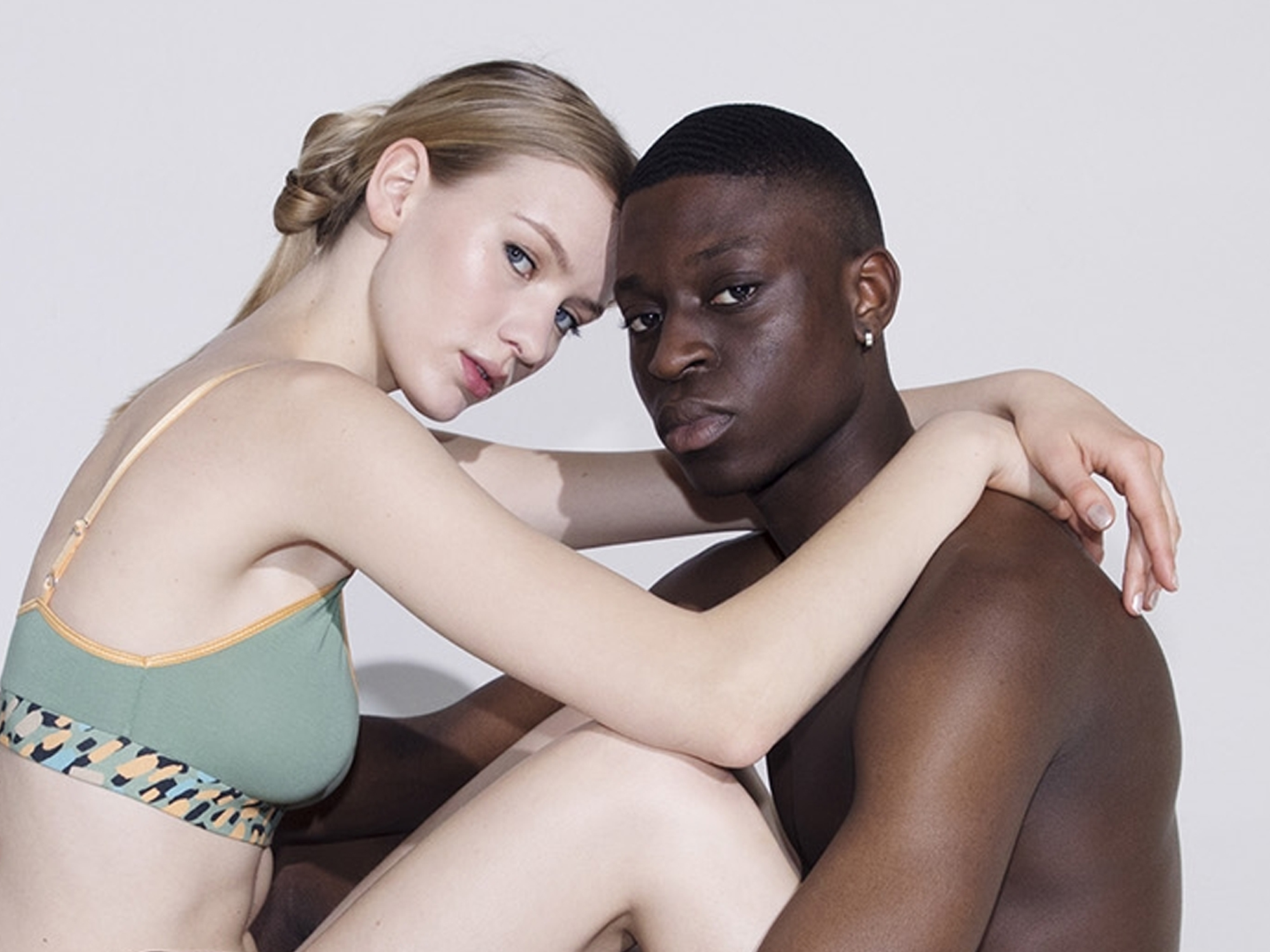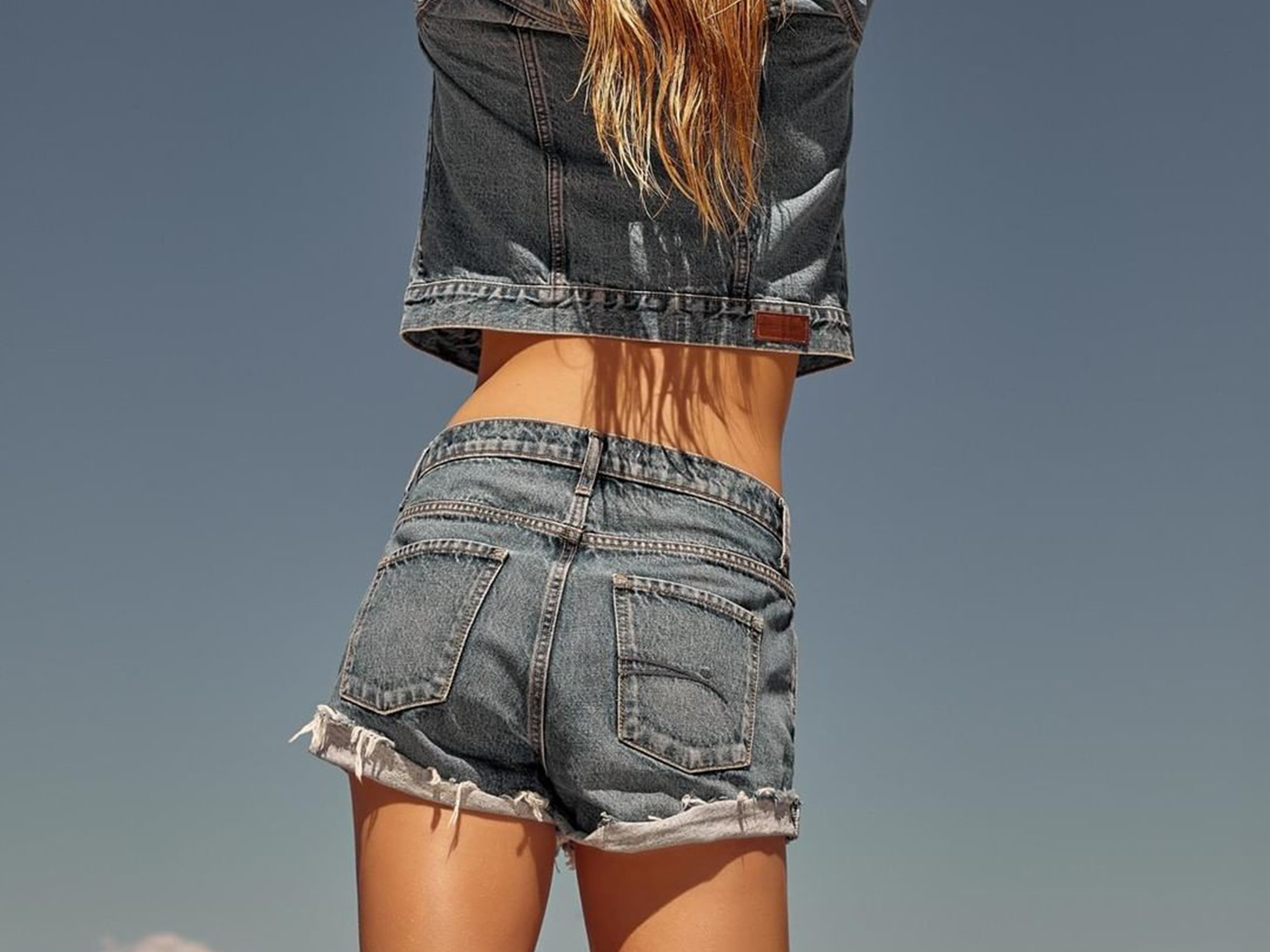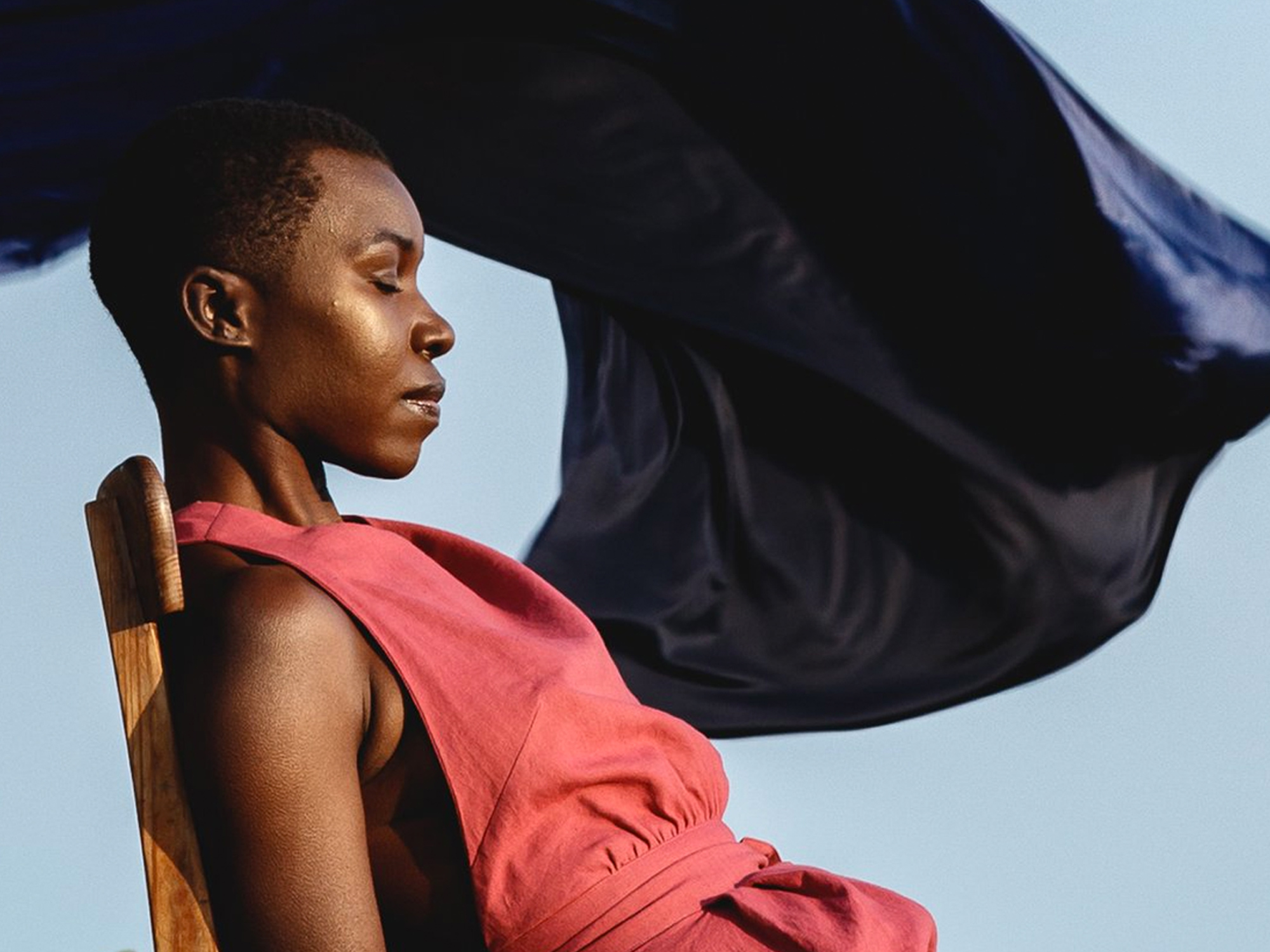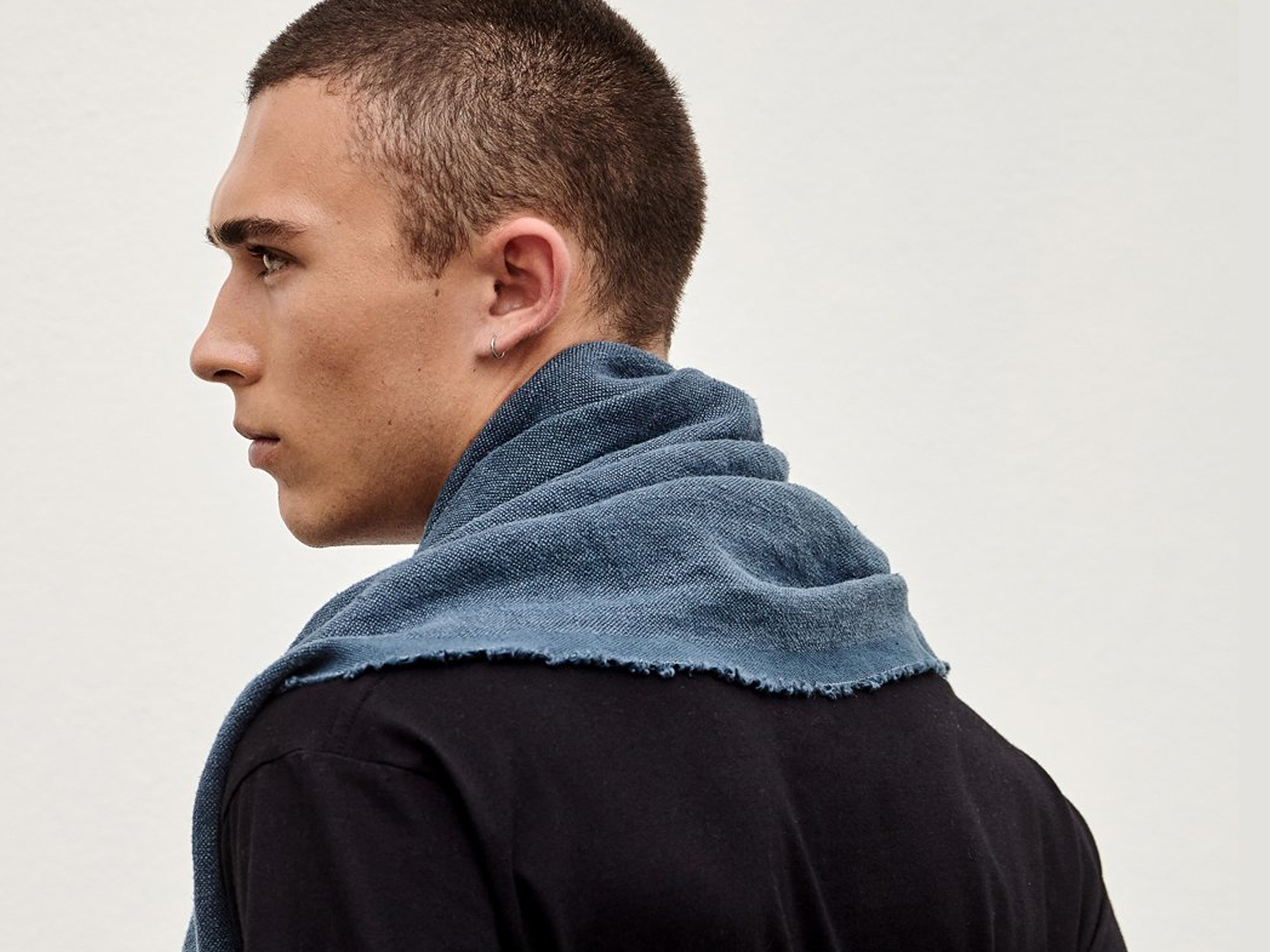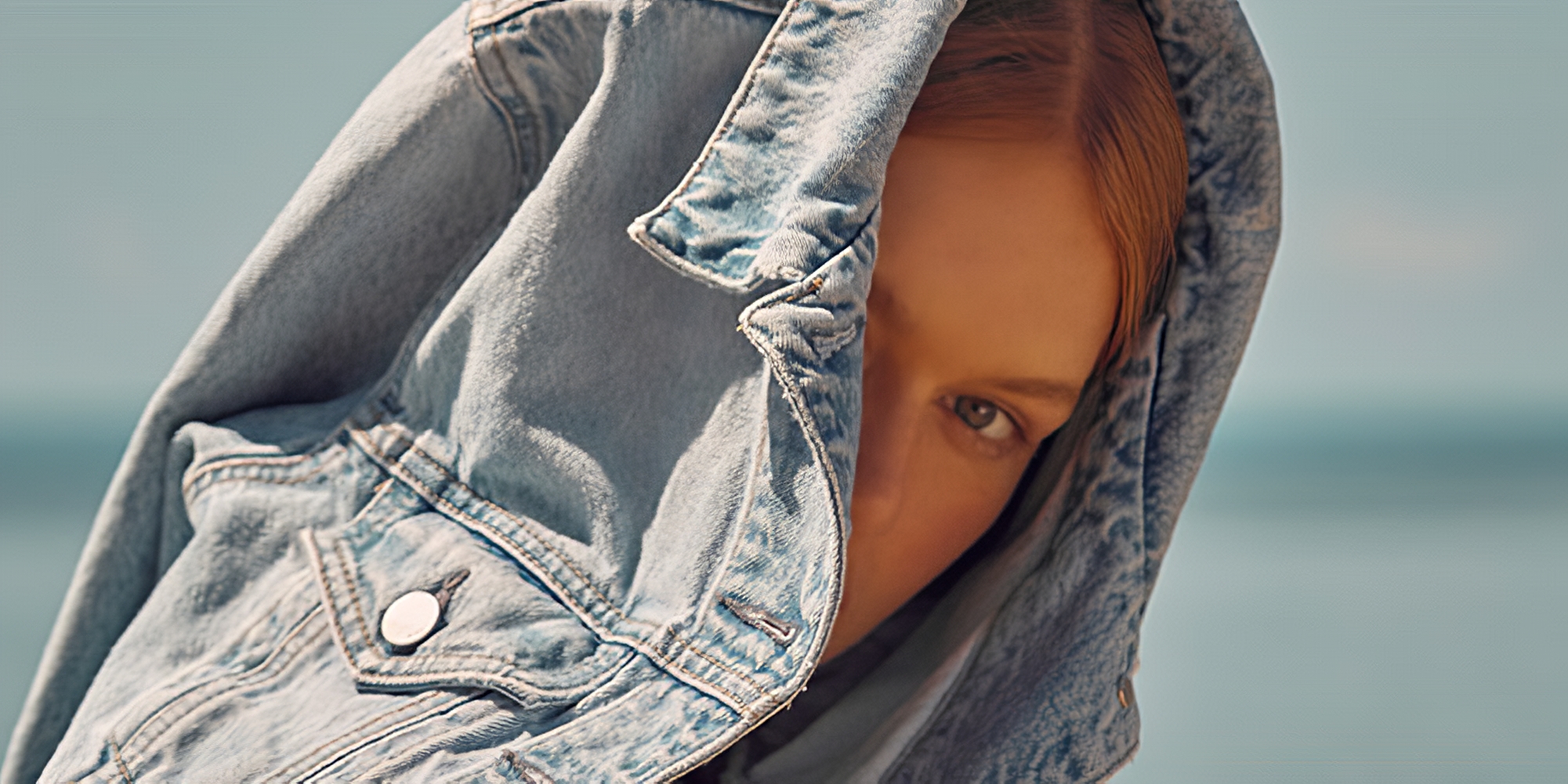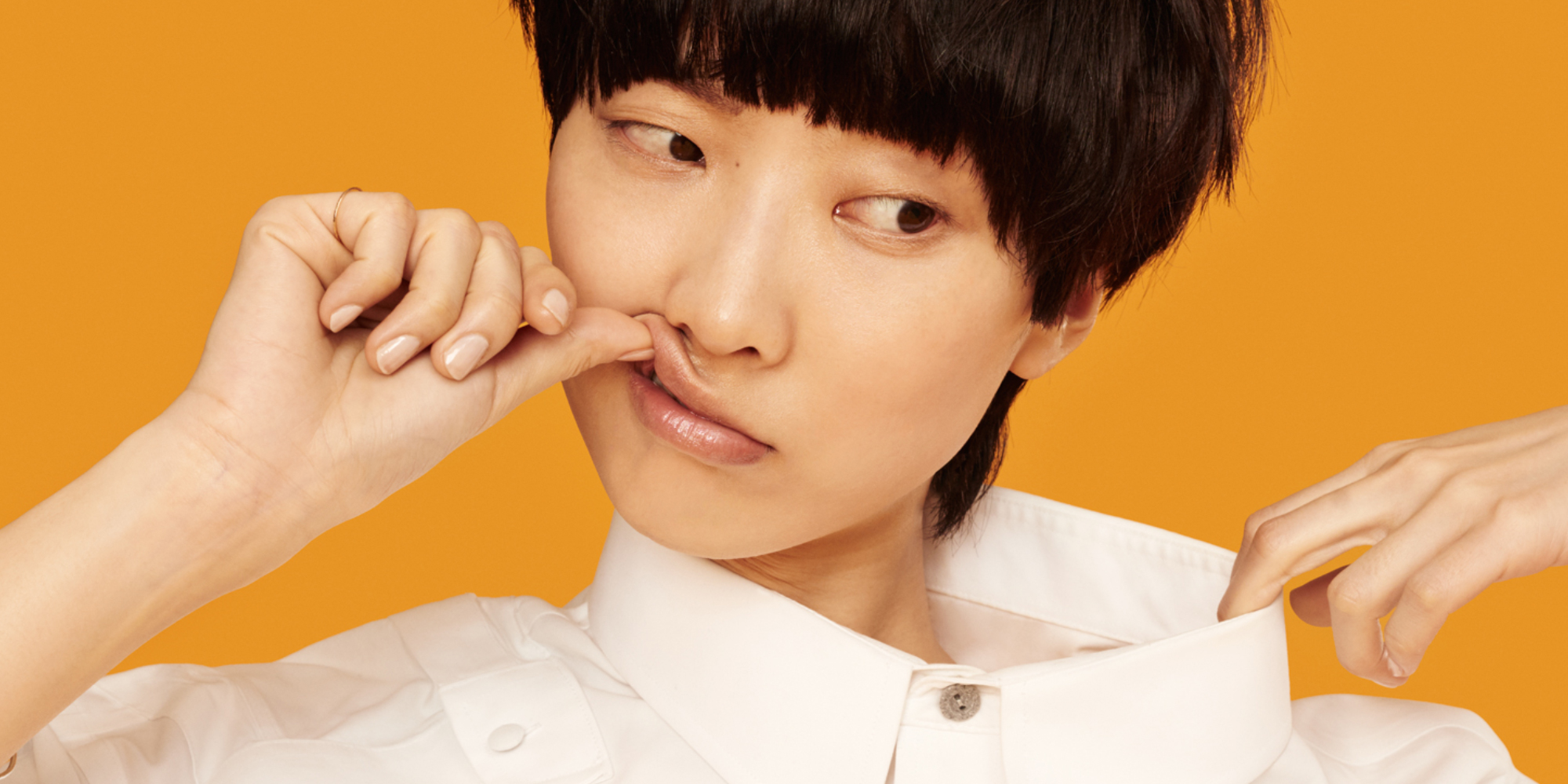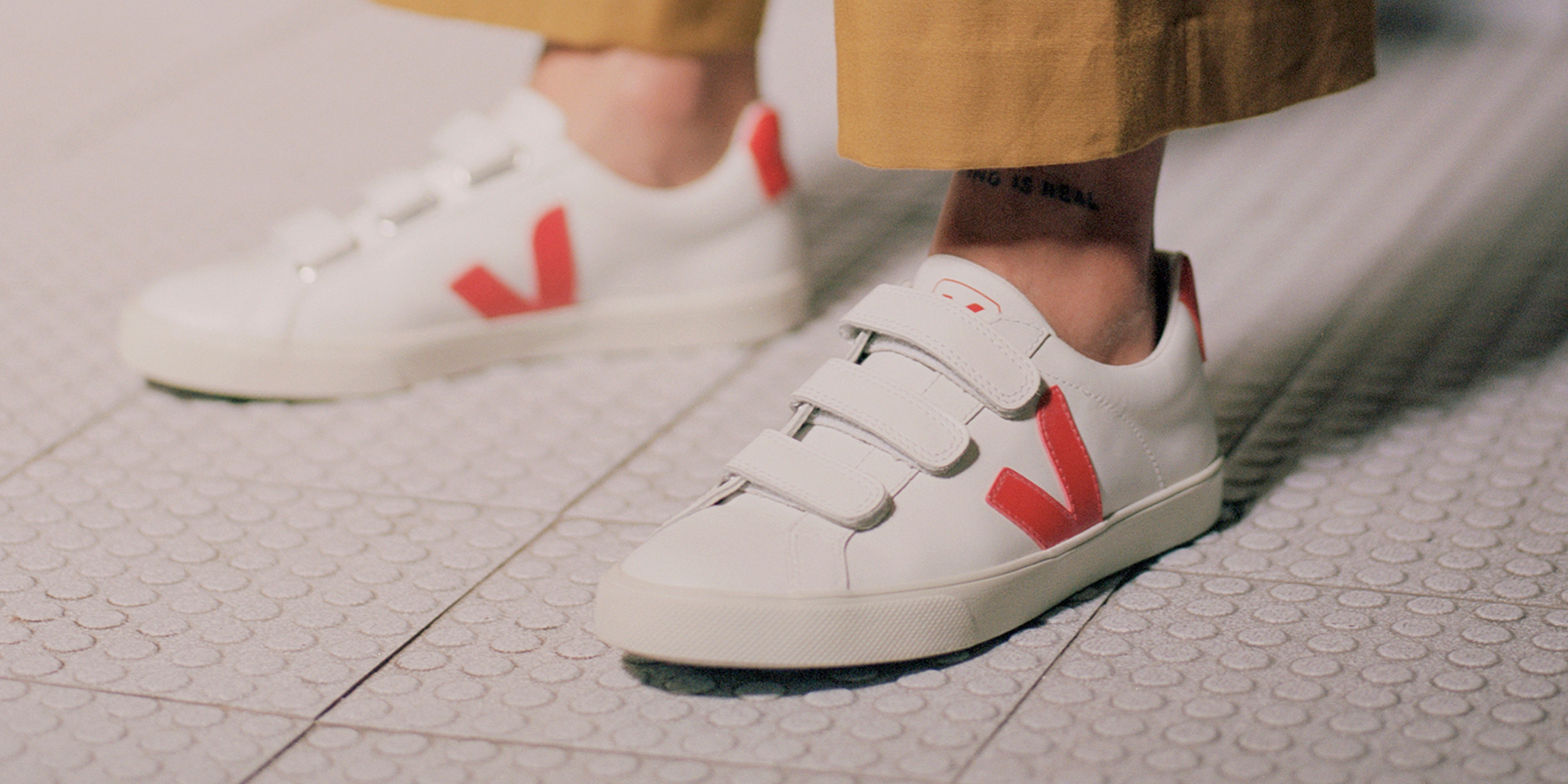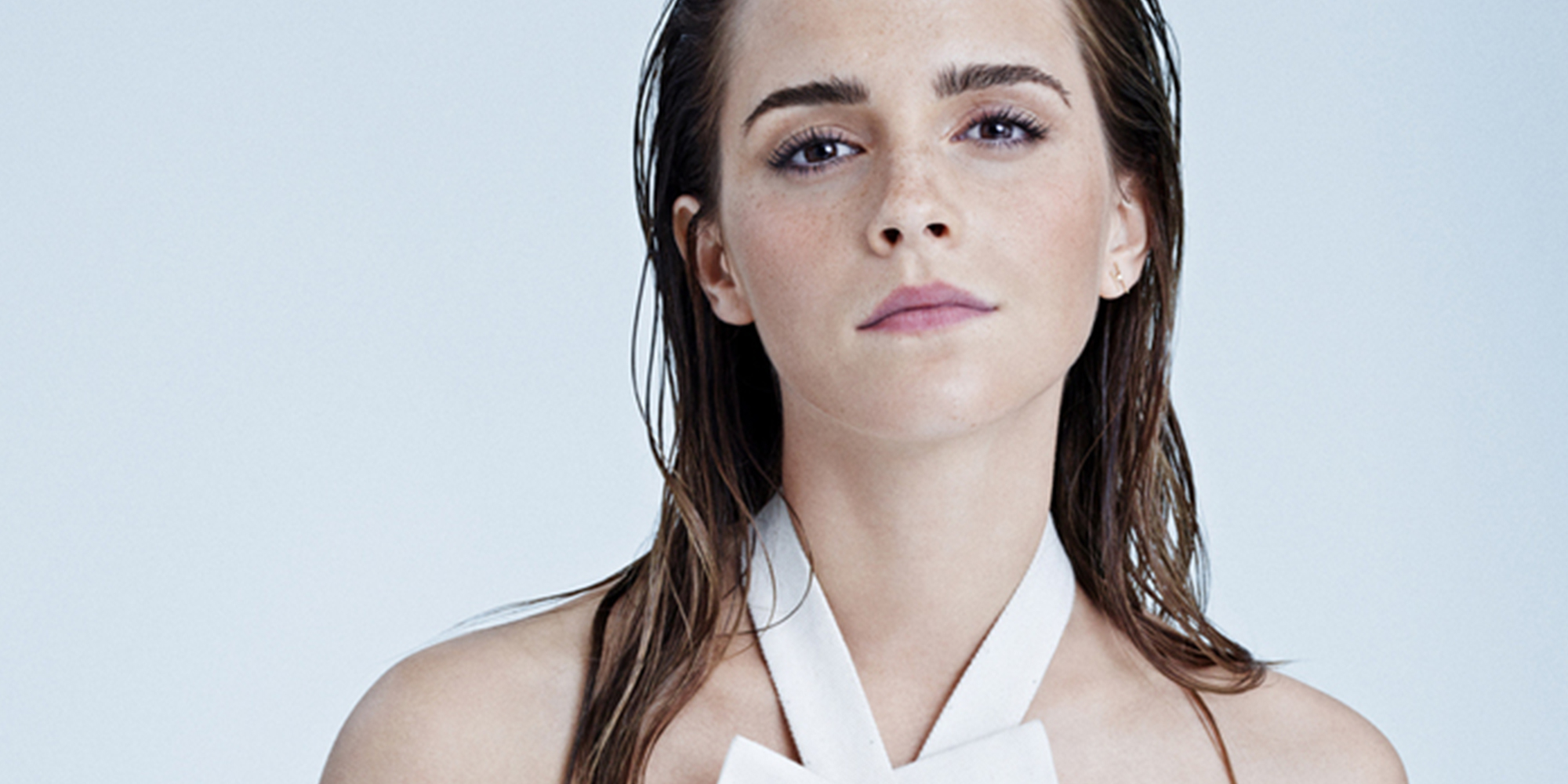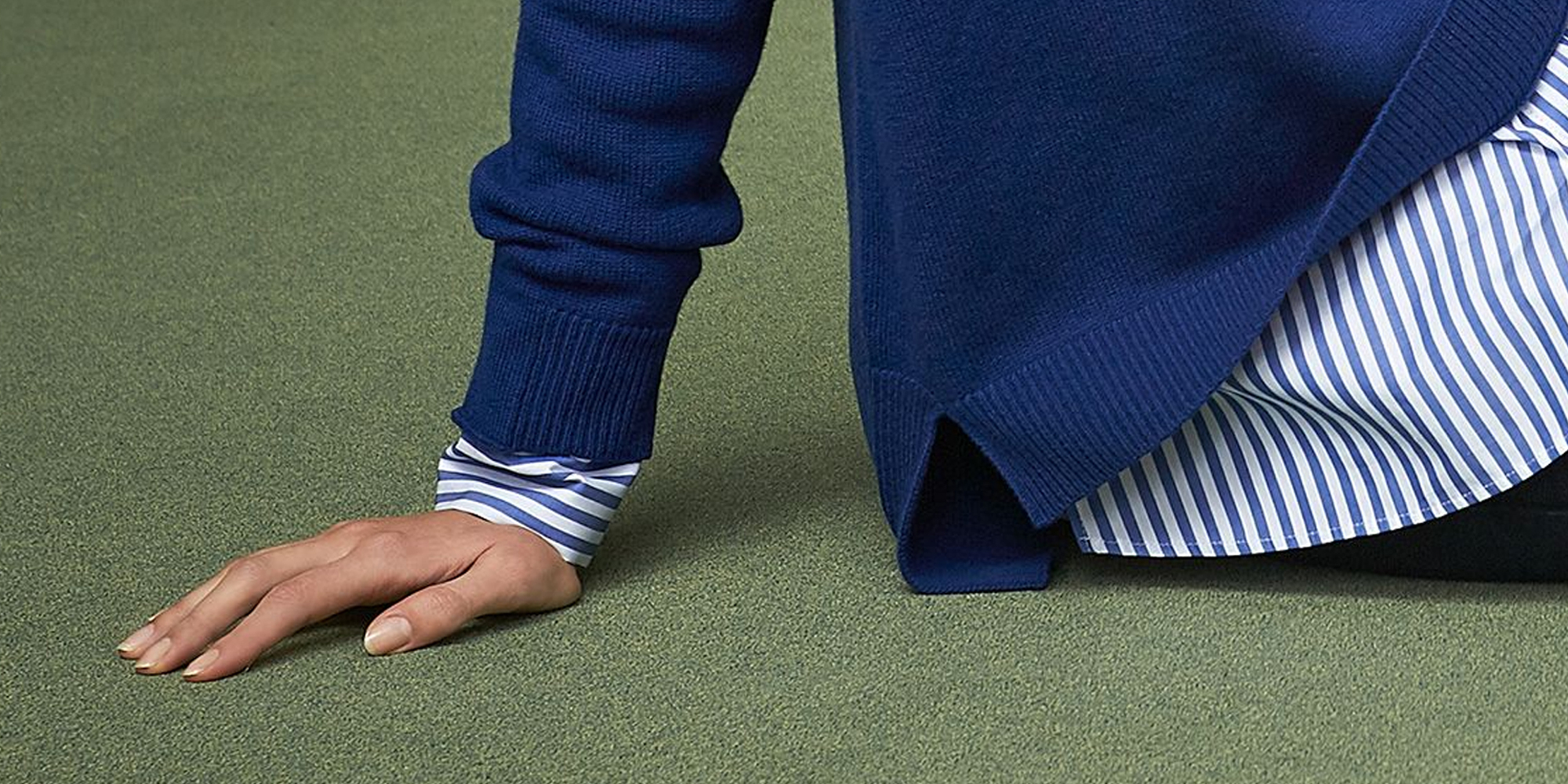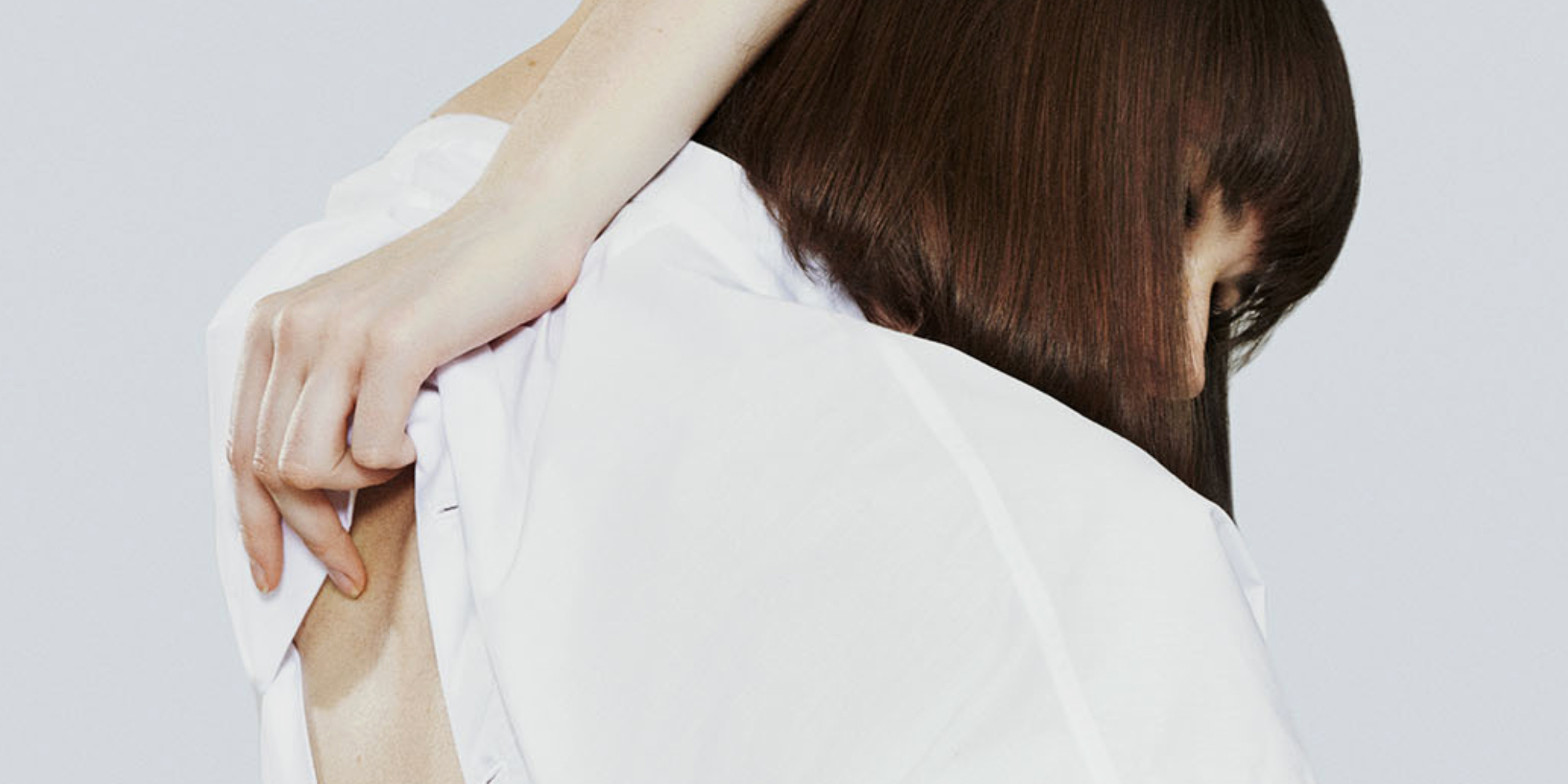Have you ever wondered where the pearlescent lustre in your eyeshadow or lipstick actually comes from? Or what makes your highlighter glow? The answer is often mica—a mineral with reflective and refractive properties that’s loved by the beauty industry. But, beauty reporter Theresa Yee writes, beneath the sparkly surface there are a host of sustainability issues associated with mica.
If it shimmers, it’s probably mica—but what exactly is that?
From glittery eyeliners to metallic lip glosses and dewy illuminators, sparkly products that catch the light have long been heroes in the beauty industry. The exponential rise of beauty trends on social media such as #glassskin (think radiant and lustrous complexions inspired by K-beauty) and #Y2Kmakeup (glittery eyes and metallic lips inspired by the 2000s) has made shimmery products more popular and desirable than ever—and, therefore, the main ingredient that makes things sparkle: mica. If you wear makeup, there’s a good chance that some of the products you put on your face and body contain it.
“Mica is a mineral powder, mostly used in colour cosmetics for its pearly effects,” explains Eva Lagarde, CEO and founder of beauty sustainability platform re/sources. “It’s very resistant to pressure or compression which makes it ideal for pressed powders, while its reflective properties offer a shimmery effect in foundations.”
And it’s not just the items in your makeup bag that contain mica—the mineral is also added to body creams to give a soft sheen, and facial skincare products to enhance skin radiance or luminosity—which is why it’s often referred to as “nature’s glitter”. Outside of beauty, mica is an ingredient in things like automotive paint, fillers for construction materials, and, in its sheet form, as an insulating material for electronics.
The term mica refers to a collective group of 37 naturally occurring minerals that have layered or sheet-like structures, with muscovite, biotite and phlogopite being the most common types found in cosmetics. Mica is mined from rocks, and when it’s used for cosmetics, is milled down to a sparkling powder. “When ground into a fine powder, it creates a pearlescent sheen that adds subtle radiance to products like eyeshadows, highlighters, bronzers, and lipsticks. Its fine texture allows for a smooth, natural-looking glow, an essential element in trends such as strobing and dewy skin finishes,” explains Rachael Polowyj, chemist and cosmetic ingredient expert.
Mica’s natural colours vary subtly, and in cosmetics it’s typically used in its pearlescent white form, but it can also be coated with pigments and dyes to create more vibrant hues. According to a 2019 report from the Responsible Mica Initiative, roughly 18% of mined mica is used in the beauty sector worldwide. Depending on the desired effect, a single beauty product can contain anything between 1% to 60% concentration of mica, which is sometimes listed as C177019 (the universal colour number for mica), potassium aluminium silicate (a chemical name for muscovite), or sericite (a finer form of muscovite) on a product’s ingredient label.
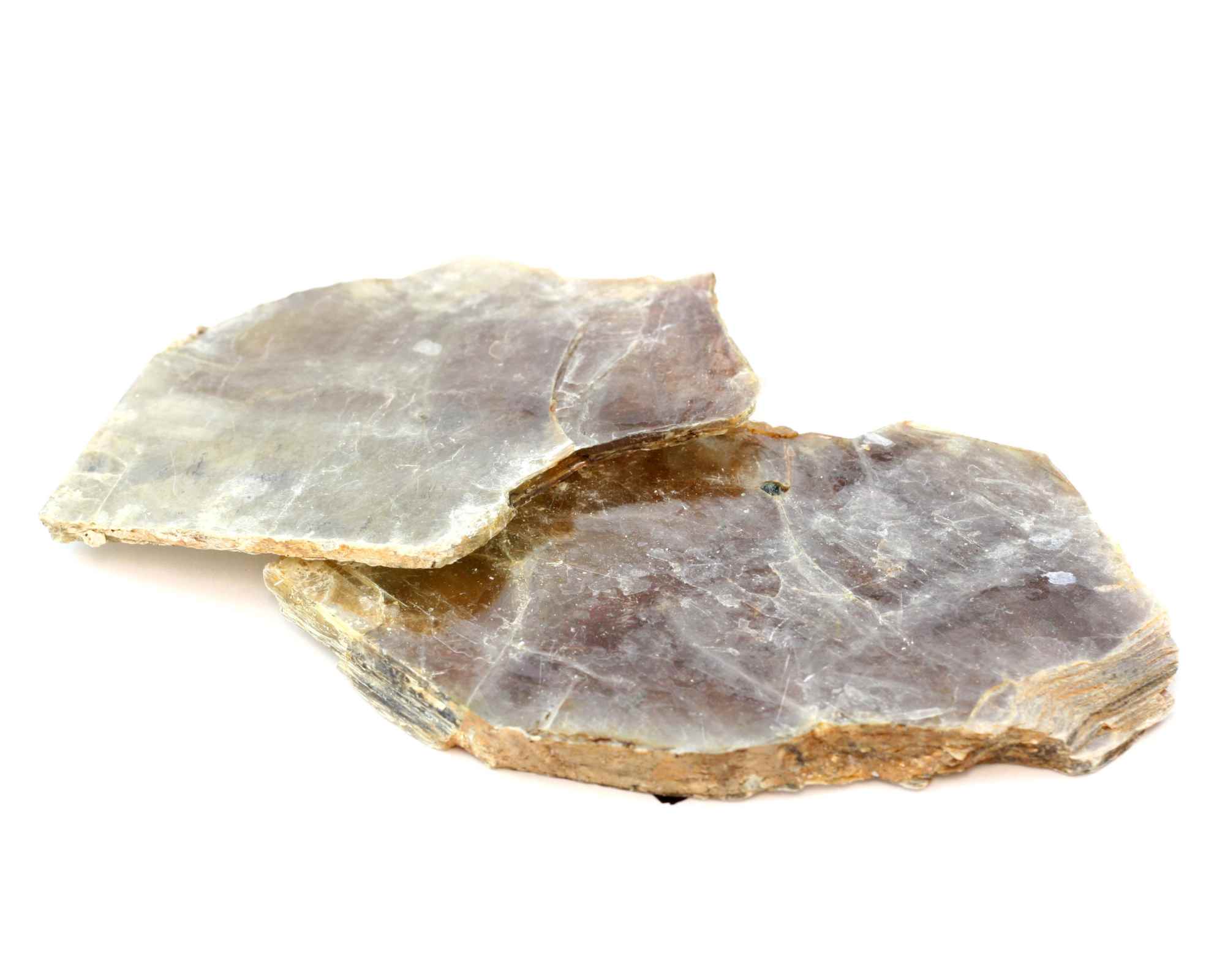
Muscovite mica in its raw form.
The darker side of mica: its supply chain
But mica loses its lustre—figuratively, at least—when you look closer at the industry behind it.
Mica itself isn’t necessarily an issue from a human health perspective. It’s been approved for skin application in cosmetics by regulatory bodies like the US Food and Drugs Administration (FDA) and the European Commission.
Its supply chain, on the other hand, is a different story. “While mica is safe for use in cosmetic products, the process by which it is sourced raises significant ethical concerns,” explains Polowyj. “Approximately 25% of the global mica supply originates from India, particularly the states of Jharkhand and Bihar, areas known for illegal and unregulated mining. In these areas, child labour is a persistent issue, with children working in hazardous conditions that pose health and safety risks.”
Mica mines in countries such as India and Madagascar have been plagued with human rights violations, unsafe mining practices, and child labour. Workers, including children as young as five years old, are often forced to work in dangerous and unregulated conditions, risking their lives to extract mica in deep mining shafts located in remote areas.
According to a 2018 report by World Vision Canada, in Jharkhand and Bihar only 10% of mines are legal, meaning the majority do not have regulation or enforced labour laws. Child labour is widespread in the regions, and another report published in the same year by The Centre for Research on Multinational Corporations (SOMO), found that an estimated 22,000 children were working in mica mines in Jharkhand and Bihar alone. And in Madagascar, an estimated 10,000 children currently work alongside their families in unsafe conditions in informal mica mines.
Workers of all ages are exposed to hazardous conditions, and according to Pact, the biggest health and safety issues facing mica mining workers are landslides, burial, injuries from falling into holes, suffocation, ocular infections, blindness due to mica particles, and respiratory infections and diseases from mica dust—the latter is often not formally reported, either, making it hard to know how widely workers are truly impacted.
The industry also has an environmental impact as Lagarde explains: “Mica [mining] can be detrimental to the environment. It can degrade biodiversity and deplete the natural resources of the planet as it does not regenerate.” Large areas of forests have been cleared for mica mining, contributing to deforestation, destruction of wildlife habitats, and polluting soil and waterways.
Beauty should never come at the cost of someone else’s wellbeing.
Rachael Polowyj – chemist and cosmetic ingredient expert
With all the negative impacts on both people and planet, should we boycott products that contain mica altogether?
“While calls to boycott mica are driven by legitimate concerns, particularly the use of child labour and unsafe working conditions in unregulated mining regions, completely withdrawing from mica sourcing may also have severe economic consequences for communities that depend on mining for their livelihoods,” says Polowyj.
A much better solution would be for brands to adopt a more balanced and sustainable approach by supporting ethical reform and demanding transparency and accountability from suppliers, Polowyj explains.
Responsibly sourced mica is a more sustainable option
Organisations are working to improve the situation by promoting responsible sourcing practices, notably the Responsible Mica Initiative (RMI), a global non-profit coalition that was created in 2017 and comprises different companies across multiple industries.
There are more than 100 companies participating in the RMI, including Clarins, Sol de Janeiro, Burt’s Bees and L’Oréal. RMI states that it is working towards eliminating child labour from the mica supply chain by 2030 by encouraging members to map their supply mica supply chains; offering training sessions for processors; promoting responsible workplace standards for processors and mines; and helping to empower communities dependent on the industry by promoting school enrolment for children.
But the beauty industry’s commitment to transforming mica sourcing leaves a lot to be desired. New data from Good On You’s Beauty Sustainability Scorecard found that of the 239 brands surveyed—from industry giants to small businesses—just 12% of them almost exclusively source from suppliers that are audited against the RMI’s Workplace Standard. A few of the beauty brands that have stepped up and committed to using responsibly sourced mica in their products are RMS Beauty, Kosas, e.l.f. beauty, and Kjaer Weis.
Natural v synthetic mica
Some beauty brands are using synthetic mica—also called synthetic fluorphlogopite—instead. Lush, for instance, made the switch back in 2018. This synthetic iteration mimics the shimmery effects of natural mica, but is made in a laboratory or industrial facility.
“As a lab-created material, synthetic mica eliminates the ethical concerns associated with traditional mining practices while delivering comparable, and often superior, visual performance in terms of purity, consistency, and aesthetic effect,” explains Polowyj.
Synthetic mica sidesteps all the ethical issues associated with the natural mineral’s mining, so it’s been touted as a more sustainable alternative. Questions have been raised about the environmental impact of synthetic mica manufacturing because it happens at a high temperature in a high-energy process. But there is limited data from studies or reports around the ingredient’s environmental impact, so it is hard to make a true comparison with natural mica.
We urgently need greater transparency around mica sourcing
There’s still a huge lack of transparency in the beauty industry as a whole. Becca Willcox, Good On You’s beauty ratings manager, notes: “One of the most striking findings regarding mica is the overwhelming lack of transparency. While mica is a very common ingredient, we found that brands rarely disclose where and how it’s sourced.”
Good On You’s findings revealed a staggering 79% don’t disclose anything about their mica sourcing, despite mica being listed on their ingredients lists. And only 1% of brands have a clear statement that they do not use mica.
However, when mica is used, it’s often hard for consumers to decipher if the mica in the product is sourced ethically due to a lack of clear labelling. Polowyj explains that it’s not easy to differentiate between ethically and unethically sourced mica, because both versions will appear as ‘mica’ on a cosmetic products ingredient list. And Willcox notes that aside from the RMI, there is no universally adopted certification for mica.
While a handful of beauty brands are now taking some meaningful actions to address their impacts, there is still a long way to go. As consumers, we can play a role by actively demanding greater transparency and accountability from the beauty brands we buy from, while supporting businesses that are committed to using ethically and responsibly sourced mica.
As Polowyj says: “Supporting brands that prioritise ethical sourcing sends a clear message: beauty should never come at the cost of someone else’s wellbeing.”




